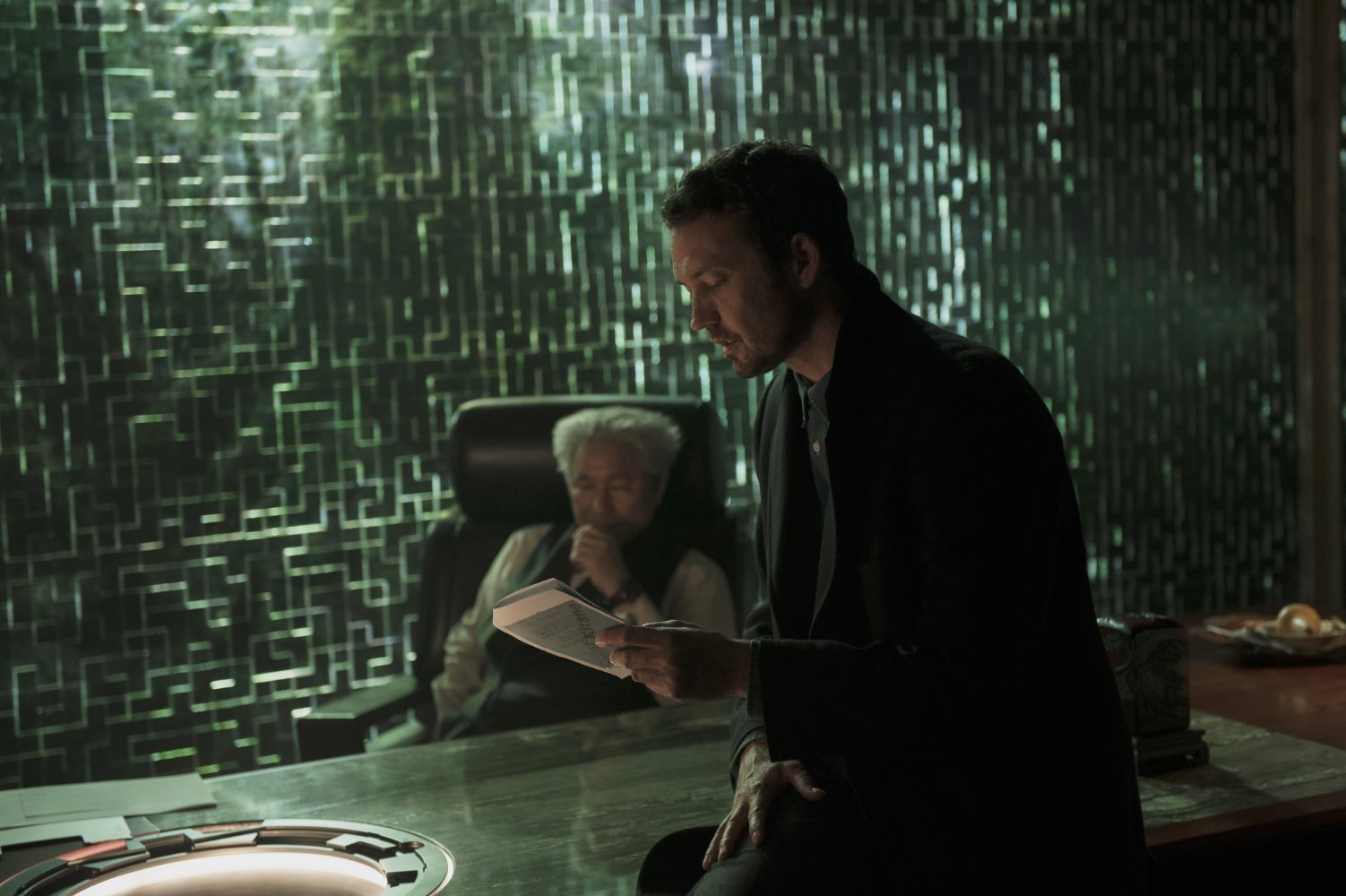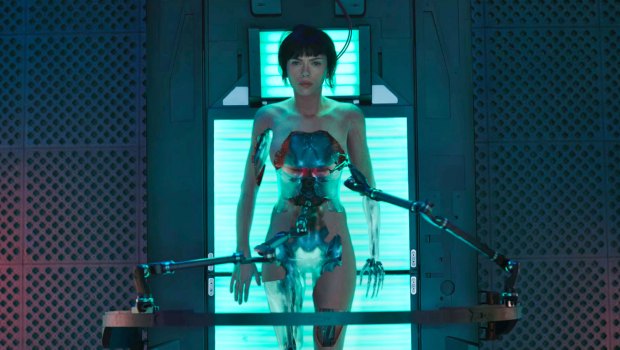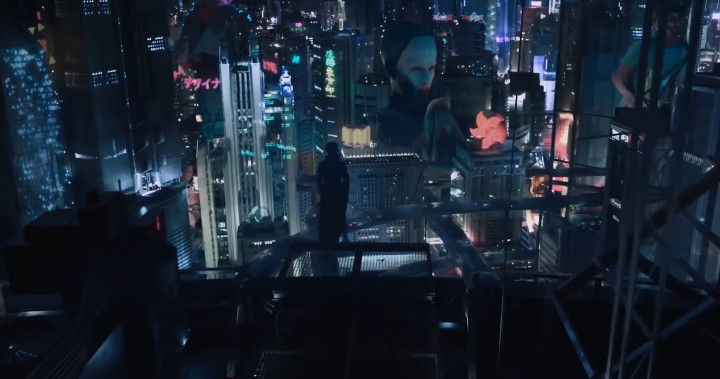
Spoiler Alert!
Please do not read this list if you are concerned about spoilers.
If, however, before seeing this movie you are concerned you might not like it because of things you have read or heard—perhaps to the point where you’ve decided you don’t even want to see it at all—then the spoilers contained within this may help you have a better experience of the film when you do go to see it, which you should.
For those who have already seen it, you’ve got nothing to worry about, have you?
From the moment an English language live action adaptation of an anime series or feature film is announced, there is an almost guaranteed immediate backlash followed by intense scrutiny of the production with a focus on finding faults. This is simply how devoted fandoms function, mainly because given the track record for past English language live action adaptations of such material, there is plenty of good reason to expect disappointment.
The fundamental formal differences between live action and anime present major challenges in adapting from one to the other. These challenges sometimes prove difficult to overcome even in Japan itself where live action adaptations of popular anime and manga properties are routine occurrences.
To their advantage, however, the Japanese have a nearly 100 year tradition of what they call “tokusatsu” (roughly “live action special effects”) films and TV shows (Think Godzilla, Power Rangers, etc.). Tokusatsu is a genre that has its own set of cinematic conventions that—while they may strike non-Japanese viewers askance—create for Japanese audiences a kind of aesthetic bridge between the acceptably impossible things that can happen in anime and the increased demand for realism in live action motion pictures.
In the present case of Rupert Sanders’ Ghost in the Shell (henceforth: GITS) starring Scarlett Johansson, the aesthetic bridge of tokusatsu collapses because this film is no longer a specifically Japanese work with an equally specific Japanese intended audience.
This film is an international co-production with a total budget exceeding $100 million that includes major funding from the Chinese companies Shanghai Film Group and Huahua Media. It exists at the intersection of film as artistic entertainment and film as investment product, and director Sanders therefore needed to make concessions to the latter in order to create the former in a way that would have the international appeal required of it by its international financiers.
How then to rebuild this “collapsed bridge”? Sanders and the team of screenwriters come through with a solution that is simultaneously ingenious in its functionality and pedestrian in its familiarity. Their live action GITS is an origin story. They have invented the origin of the “Major” character while also repurposing some of the iconic scenes and characters of the earlier films to serve this new narrative.
Comparing this live action film to the earlier works that it is based upon—primarily Oshii Mamoru’s 1995 film of the same title, and, to a lesser extent, his 2004 follow up Innocence—makes for a fascinating study in what specific segments of the global audience for a mainstream blockbuster film might be expected to tolerate and, beyond mere tolerance, hopefully even find enjoyment and meaning.
1. Tolerance of Racism

This film’s racial and gender representations, which are almost unavoidably problematic, deserve much more space for discussion and interpretation then what this article is designed to provide. The heading of this section is by no means intended to convey that violent acts of racist oppression should be tolerated.
Instead the direction here is to think about possible considerations surrounding notions of racism, rather than being unself-critically reactive to them. In regard to “whitewashing” casting controversy, the (both literal and figurative) bottom line here is that, as Sanders said in an interview with the website Motherboard, “Getting Scarlett was very key to getting this film made. Without her, we wouldn’t have made this film.”
The spectres of racism and sexism rush in to haunt any mainstream contemporary films that feature representations of race and gender that can be construed as “whitewashed”, “objectifying” etc. Yet in examining GITS it is worth considering a tolerant frame of mind regarding its possible transgressions in these areas in order to bear witness to the film’s successes in these fraught cultural spaces.
Consider, for example, this framing: while the lead character Major/Mira/Motoko is played by a white actor (Scarlett Johansson), that lead character—the character that is very truly the face of the movie—is a woman. Full stop. Additionally, the two characters with arguably the greatest power for good at (let’s call it) the institutional level in the film’s narrative are (and are played by) a French woman—Dr. Ouelet (Juliette Binoche)—and a Japanese man—Aramaki Daisuke (Takeshi “Beat” Kitano, who only speaks Japanese throughout the entire film).
Still further, the film’s villain Cutter (Peter Ferdinando) is clearly marked as a white male American authoritarian corporate capitalist. Lastly, this villain’s vicious ongoing crime against humanity is, quite literally, kidnapping and killing Japanese young adults so that he can experimentally transplant their brains (with their memories erased) into cyborg bodies that then pass as white human beings.
It is also worth considering that as Shirow Masamune was penning the manga on which Oshii’s 1995 anime was based, the internet was in its infancy. These artists were tentatively predicting a global paradigm shift in the flow and usage of information that we have in many ways seen come true in the intervening decades.
Perhaps it is worth considering, then, that the fluidity with which we think of race and gender in an increasingly globalized world—a globalization led, for worse or for better by white American capitalist businessmen—might potentially be on the cusp of a paradigm shift of the kind Sanders’ film hints at.
2. Tolerance of the Mainstream Recuperating Subcultural Artworks

Adapting stories that are largely specific to one culture for a global audience is guaranteed to be problematic. For native Japanese, anime is a mainstream cultural product. Non-Japanese fans of anime, however will find it valuable to notice that they inhabit a fandom that is subcultural within their native (non-Japanese) cultures.
This is similar, for example, to identifying as a “punk” or “goth” or “hippie” within a culture where one of those subcultural groups or fandoms is native. Making meaning travel from point to point in this circuit of native culture-subculture-global culture is no small feat to undertake.
Continuing this comparison, it is a natural tendency within the voracious transnational media production industry (largely driven by the U.S.) to seek out innovations that emerge from native cultural and subcultural niche media and do with those innovations what the 1960s revolutionary activists known as the Situationists referred to as “recuperation.”
An entry in Wikipedia explains that an early Situationist manifesto written by one the group’s leaders Guy Debord, “described official culture as a ‘rigged game’, where conservative powers forbid subversive ideas to have direct access to the public discourse.
Such ideas get first trivialized and sterilized, and then they are safely incorporated back within mainstream society, where they can be exploited to add new flavors to old dominant ideas.” This phenomenon is called recuperation. This concept from ‘60s countercultural activism is also an ancestor of the more contemporary notion of “cultural appropriation.”
It is important to note here, as Brian Ruh does in his 2004 book “Stray Dog of Anime” that, “In high school, inspired by the student protest movement [of the late ‘60s], Oshii began to become more politically active, participating in anti-establishment rallies and demonstrations. This interest in politics, and its intersection with Oshii’s devotion to science fiction, is reflected in many of his later films.”
But just as Oshii himself balances his own interest in revolutionary politics against (as Brian Ruh also notes) his seemingly contradictory “fascination with military hardware and paraphernalia,” it is worth considering toning down the fervor to accuse—as Situationists and GITS otaku alike might—Sanders’ live action adaptation of being nothing more than a dumbed down (“recuperated” or “culturally appropriated”) corporate media sell-out version of the original.
It is also worth noting that in Sanders’ film, during the scene in which Major/Mira/Motoko meets her biological mother, Kusanagi Hairi (veteran Japanese actress Momoi Kaori), her mother explains to her that before disappearing, Motoko wrote “manifestos about how technology was destroying the world.”
Through this character metaphor, then, Sanders opens a loop of ambiguity that encompasses both an inherent (and ironic) contradiction within the Major character and an inherent contradiction in making a blockbuster high-tech action movie as a gesture toward discussing (to paraphrase the title of one of Freud’s great works) modern technology and its discontents.
3. Tolerance of Intellectual Complexity and Simplification in Different Works within the Same Franchise

One of the advantages an auteur filmmaker like Oshii has is in producing artwork for a niche audience is the available assumption that his audience will, in a sense, come to him regardless of the specific subjects, actors, and even visual styles he chooses. Setting aside his best known GITS films,
Oshii’s wide range of films—both animated and live action—run the gamut from his dreamlike and almost wordless first solo-directed anime feature Angel’s Egg (Tenshi no tamago, 1985); to his low budget black and white first live action film The Red Spectacles (Jigoku no banken: akai megane, 1987); to the 2001 Polish language live action film (referenced briefly in Sanders’ live action GITS) Avalon that Oshii describes as a military RPG story; to what is perhaps his most bizarre work: Amazing Lives of the Fast Food Grifters (Tachiguishi retsuden, 2006), in which still photographs are animated to darkly comic effect against an overwhelming and nearly continuous torrent of dialogue and voice over narration.
Given a list like that (which barely scratches the surface of Oshii’s work), it should be unsurprising that rather deep intellectual engagement will be a given requirement in approaching any of his films. What to do then, when adapting the work of such a director for the requirements of a global (and, shall we say, PG-13-friendly) audience?
The short, obvious answer is of course: “Dumb it down.” Here, however, it is valuable to look more deeply at Sanders’ strategy of casting his film in the mold of an origin story. Such origin stories are by now (if they weren’t before) a universally accepted formula for providing a readily accessible starting point to a franchise that is new to a global mainstream audience, even as the same franchise already has an established niche fandom.
To the extent that a potentially long established niche franchise has a pre-established lore overstuffed with stories and trivia and images or names that may be iconic to existing fans (i.e. the Marvel Comics Universe), an origin story can readily return to the zero point of that long history and thus attempt to free itself from the complexity that can manifest as a burden upon hoped for new audiences.
While the tolerance of intellectual complexity associated with the existing audience for the GITS anime franchise has a specific tone to it that goes further to acceptance and even celebration of, additionally, the kinds of ambiguity and formal experimentation described below in the next two points, a global mainstream audience (and in particular the relatively youthful audience at which the present film is directed with its sanitized violence and tightly controlled sexuality) needs to be more carefully guided down a path that one hopes will lead, as described above, from the “recuperated” version back to the more dense and complex original.
In short, such mainstream live action adaptations are, at their best, meant to contribute to the overall texture of the larger franchise, rather than overwrite or replace the other works within it.